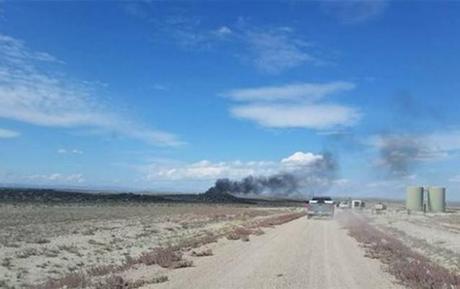by Emily Atkin / Think Progress

The incident is the latest fossil fuel-related workplace fatality in Wyoming, which has historically had one of the highest rates of oil worker injuries and deaths in the country. Worker death rates there have fallen — Wyoming oil workers are dying at half the rate they were five years ago — but so have the number of oil and gas rigs in the state. The correlation suggests that Wyoming may still be plagued with a problem it’s been facing for years: a high rate of occupational fatalities due to a lacking “culture of safety.”
The idea that Wyoming may have an endemic workplace safety problem comes from a 2012 report from state-hired epidemiologist Timothy Ryan, who analyzed occupational fatalities in Wyoming and found numerous problems with the overall business attitude toward safety. “Safety [in Wyoming] occurs as an afterthought,” he wrote. He found that from 2001-2008, 20 percent of all Wyoming’s worker fatalities came from the oil and gas industry, and that a whopping 96 percent of those deaths occurred when safety procedures were not followed.
Since then, progress appears to be happening, with the current state epidemiologist telling Wyoming’s local NPR affiliate last week that he’s optimistic — there’s been an increase in worker safety training programs and safety meetings, he said. But NPR’s report also pointed out that some aren’t convinced that the culture is really changing at all. And that’s a problem, because once-declining drilling activity is again starting to expand in the state.
If Wyoming hasn’t in fact changed its “culture of safety,” it will be even more susceptible to the dangers of what is widely known as an industry that the U.S. Bureau of Labor Statistics says is unprecedentedly dangerous to workers. Indeed, the fatality rate for onshore oil and gas workers is seven times higher than the national average, and injuries are even more common. Between 2007 and 2012, a total of 663 workers were killed in oil-related accidents nationwide.
Working with flammable substances and heavy machinery is one reason for this increased rate, but another reasons the oil and gas industry remains so dangerous could be the fact that oil worker deaths aren’t very widely publicized. An in-depth report on worker fatalities released by Wyoming Public Media last week pointed out that oil worker deaths rarely merit more than a few sentences in local newspapers, an unfortunate phenomenon driven by the nature of the deaths. Compared to a dramatic coal mine collapse — where dozens of workers are trapped or killed underground — oil worker deaths generally happen one-by-one, in small fires or explosions.
“They don’t get the same kind of attention as a disaster in a coal mine, where you have multiple miners that may be killed,” Peg Seminario, director of safety and health for the AFL-CIO, told Wyoming Public Media. “Nonetheless, the worker who’s working in oil and gas is more likely to be killed on the job than a coal miner. That’s a fact.”

